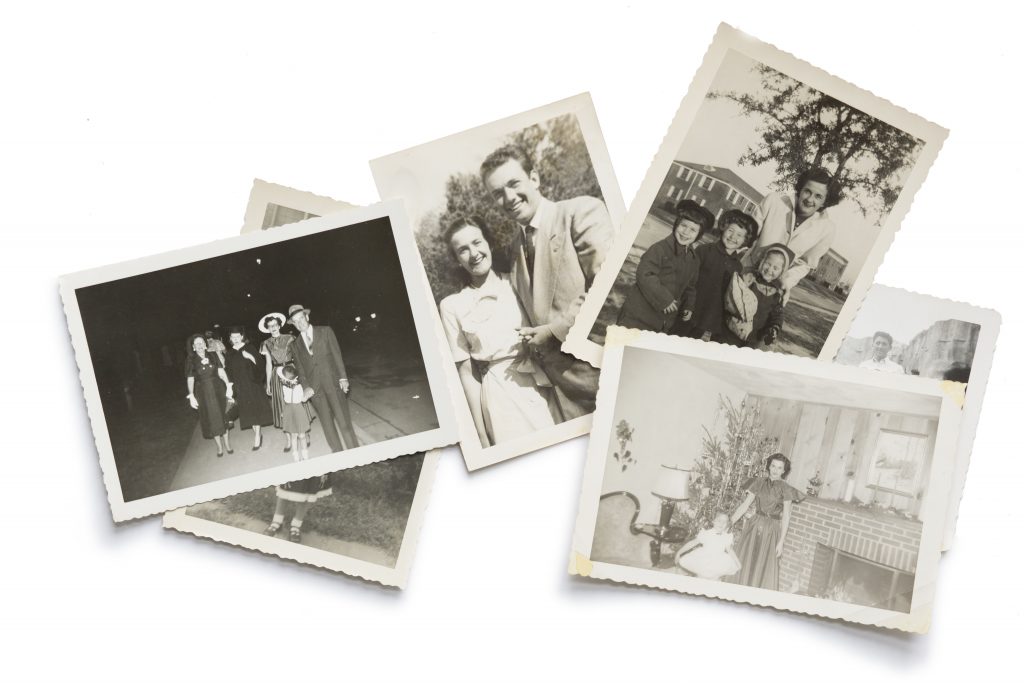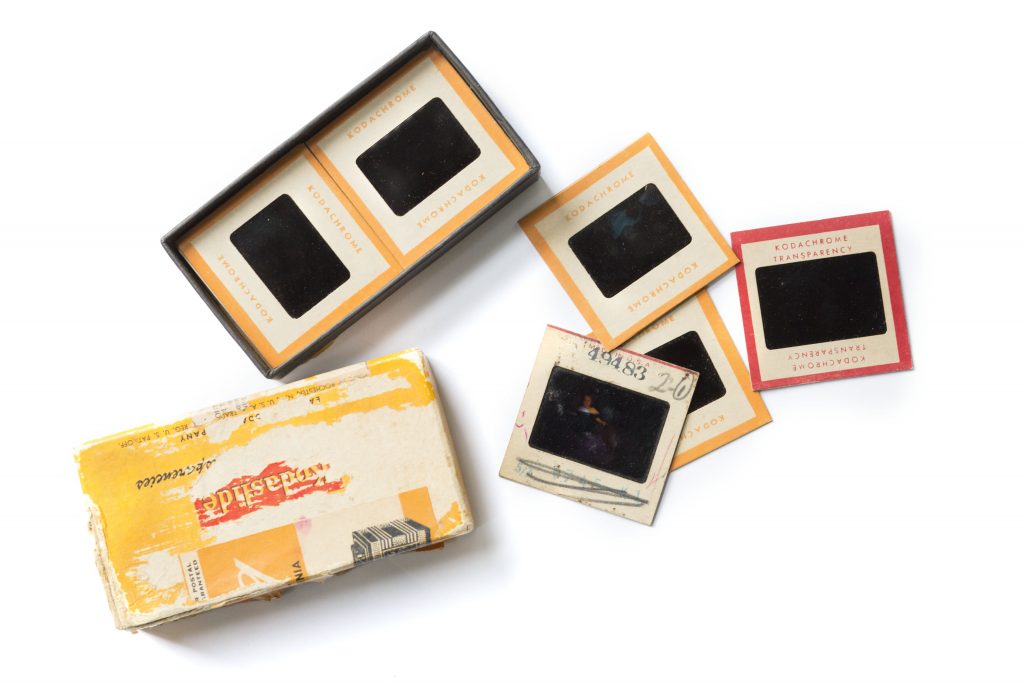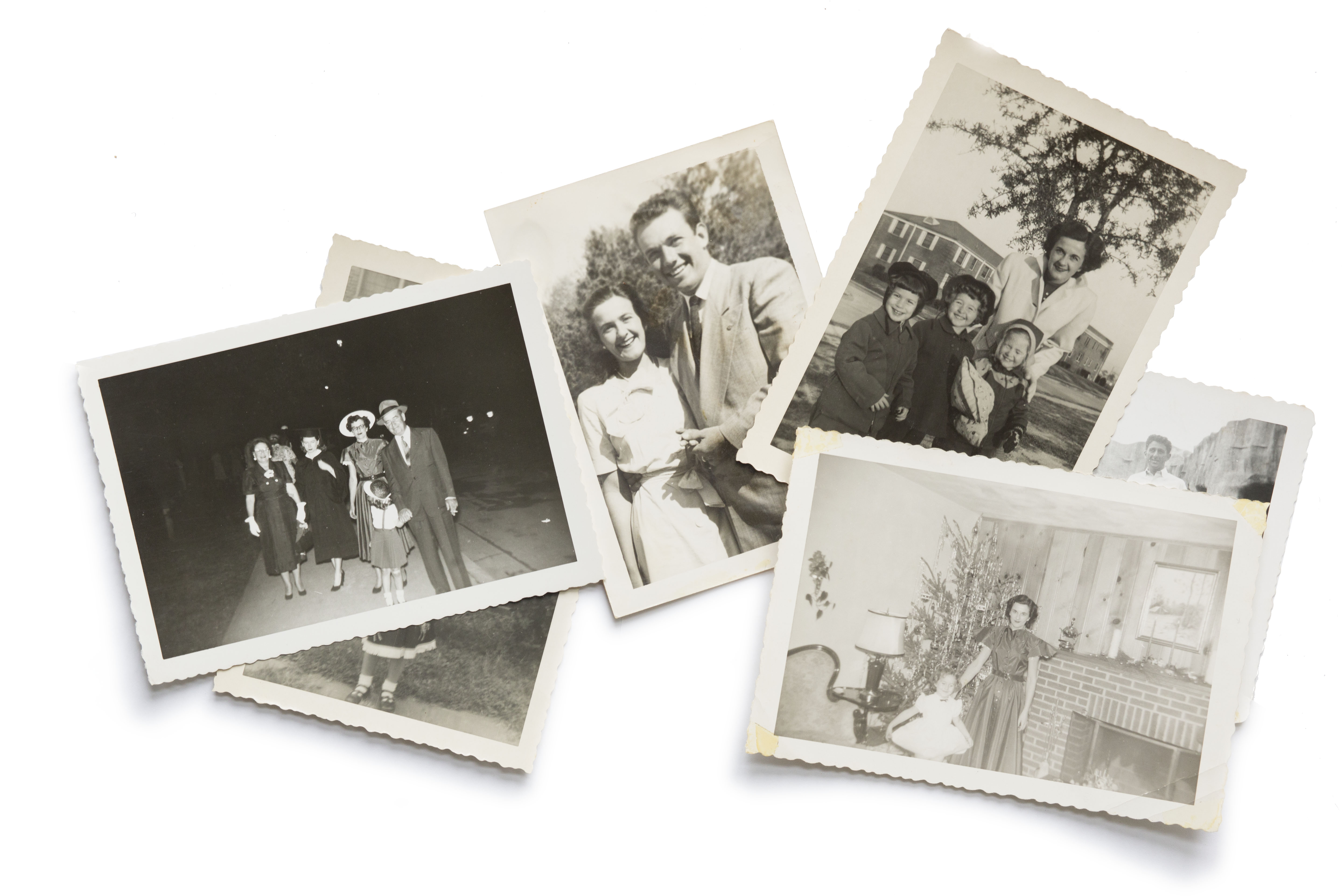Ten Reasons to Digitize Your Analog Family Photos Before It’s Too Late
 Family photos are in danger. Many of us have stacks of old photographs, slides and negatives. In addition, there are likely to be one – or many – old photo albums sitting in closets, attics, basements, or storage lockers. Now that we have fully entered the digital age, these relics of an earlier time are sort of like modern artifacts. We know they are there, but we seldom see them anymore. The answer, obviously, is to have all this photographic material scanned into digital files – essentially, to bring them into the Digital Now. Ok, that’s what we should do. But, the vast majority of us just keep putting it off. In many cases, delays happen because we just haven’t thought through all the reasons that getting all that stuff scanned is important – but it is!
Family photos are in danger. Many of us have stacks of old photographs, slides and negatives. In addition, there are likely to be one – or many – old photo albums sitting in closets, attics, basements, or storage lockers. Now that we have fully entered the digital age, these relics of an earlier time are sort of like modern artifacts. We know they are there, but we seldom see them anymore. The answer, obviously, is to have all this photographic material scanned into digital files – essentially, to bring them into the Digital Now. Ok, that’s what we should do. But, the vast majority of us just keep putting it off. In many cases, delays happen because we just haven’t thought through all the reasons that getting all that stuff scanned is important – but it is!
Here are ten reasons to digitize your analog family photos before it’s too late:
- All photographic materials deteriorate with time. The rate of decay is different for various materials, but it is happening to all of your photo memorabilia just the same.
- Old slides and negatives tend to color-shift over time. This happens when the film base gradually changes with age. The dyes used to form the image can also fade – most noticeably in the case of color photographs.
- As soon as you digitize your vintage pictures, that deterioration is arrested. Perhaps more importantly, the digitized images can, in many cases, be brought back to their original glory with relative ease, if the changes have not been too great. In addition, there are now digital storage discs that are expected to last for over 100 years.
- To view your slides, you have to dig out your old projector (if it still works), or a slide viewer, in order to enjoy them.
- If you have old negatives, you really can’t view them at all – unless you have a rare genetic ability to invert colors on your own.
- Due to a technical oversight, the manufacturers of old photo albums neglected to install USB ports (it may have to do with the fact that the technology did not exist). That means, unfortunately, there is no easy way to upload them to your computer. A scanning service, however, can scan not only the full album pages (to preserve the “flavor” of the album), but they can also scan the individual pictures as well, if desired.
- Your past is important – not only to you, but to your children, grandchildren and other relatives. Your family photos represent the best repository of your past. They are important pieces of your family history. By digitizing them, you can share them with all of your loved ones.
- Once they exist as digital files, all of your old photographs can be shared easily. You can post them to Facebook, upload them to Pinterest, share them on Instagram for #TBT, or create digital slideshows for family reunions and celebrations.
- Uploading your scanned photos onto your computer turns it into a time machine. Now, all those treasured (or, in some cases – forgotten) parts of your history can be pulled up at a moment’s notice, to be enjoyed and shared.
- When they exist in digital form, these treasured artifacts can be rehabilitated as much as needed. So, even if your memories have faded, the photos of your past can be viewed as though it all happened yesterday.

If you have a large quantity of material to be converted, a good scanning service will make it easy to set up a Monthly Program, so that you can send a batch of slides, photographs, and/or negatives on a monthly basis. This allows you to spread out the cost – and time – involved in digitizing your family’s photographic artifacts.
Another important feature of a good scanning service is the ability to provide you with both photograph restoration and editing services. That way, all your needs can be met by one Service Provider.
These are just ten of the many reasons to digitize your analog family photos before it’s too late. Don’t keep putting off the project of rescuing your photographic past. While it may seem like a large undertaking, once you get into it, you are likely to find that the process is both fun and fulfilling.
 About the Author: Frank Arnoth is a retired Senior Development Engineer who spent his career innovating at E. I. DuPont. His work for duPont entailed the design and development of a wide variety of specialized machines and processes. After retiring from duPont, he formed his own company, Design Solutions Inc., which carried out very similar functions for a variety of industrial clients. After closing that business and traveling, he decided to open a business based around his hobby – photography. That’s when he founded Digital Conversions LLC. Frank and his team provide a complete suite of scanning services for photographic materials, including slides of all sizes, negatives (including disc film), photographic prints and albums. The goal of the business is to providing scanning services that are both affordable, and high-quality, with resolution levels that are among the best in the industry. The business also provides photo restoration and retouching services.
About the Author: Frank Arnoth is a retired Senior Development Engineer who spent his career innovating at E. I. DuPont. His work for duPont entailed the design and development of a wide variety of specialized machines and processes. After retiring from duPont, he formed his own company, Design Solutions Inc., which carried out very similar functions for a variety of industrial clients. After closing that business and traveling, he decided to open a business based around his hobby – photography. That’s when he founded Digital Conversions LLC. Frank and his team provide a complete suite of scanning services for photographic materials, including slides of all sizes, negatives (including disc film), photographic prints and albums. The goal of the business is to providing scanning services that are both affordable, and high-quality, with resolution levels that are among the best in the industry. The business also provides photo restoration and retouching services.





7 Comments
Save Family Photos Quick Tech Tips from Photo Restoration Pros for Bringing Damaged, Dusty Family Photos Back to Life - Save Family Photos says:
July 30, 2016 at 8:19 am
[…] It is always best to provide the restorer with the original photograph(s) so that they can be scanned at the optimum pixel density. […]
Perk Bingham says:
August 13, 2016 at 5:14 pm
Whenever possible, it’s best to scan a photo in a “loss-less” format like GIF or BMP.
Rachel LaCour Niesen says:
September 1, 2016 at 4:18 pm
Yes! That is wise advice.
Art Taylor says:
June 28, 2017 at 3:32 am
don’t scan in GIF unless the original is line art with fewer than 16 colors. The gif format can have a maximum of 256 colors so is not suitable for photos. BMP is an old Windows format and no where no as good for scanning as tif. Scan in tif (or dng) whenever possible, jpg if necessary.
Rachel LaCour Niesen says:
July 10, 2017 at 11:30 am
Great tips!!
Save Family Photos What Every Family Historian Should Know about Scanning Family Photos - Save Family Photos says:
September 8, 2016 at 6:15 pm
[…] you finally commit to start scanning that box of family photos that’s been gathering dust for years. After all, it will be fun to discover perfectly […]
Digitizing Family Photos | INF2307: Crossing the River says:
July 28, 2017 at 12:35 am
[…] basic and quick tips to individuals looking to digitize their materials at home. Sites such as Save Family Photos urge scanning as a way of preserving photos that will otherwise deteriorate and lose colour. Other […]